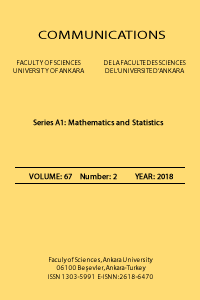A study on the modeling and simulation for the motor unit action potential
Electromyography (EMG) is a technique that gives information about the neuromuscular pattern and function which is commonly-used in the practice of neurology. With this method, the signals obtained from the muscle cells using an amplificatore are enhanced to an amount enough to study on. The potentials monitored are called Motor Unit Action Potentials (MUAPs). In this study, the findings gathered by the simulation using the dipole model for the motor unit action potential (MUAP) have been evaluated. With the motor unit modeling and simulation, the effect of different anatomic characteristics of nerves and muscles on MUAP and EMG signals may be examined. It is not possible to perform such an action empirically. The modeling and simulation for MUAP and EMG also provides a good opportunity of practicing and studying for those who started recently and wish to learn EMG. In the simulation made using the dipole model, the variables such as the diameter and distribution of muscle fibers and the location of motor end-plate area have been studied; and the effect of these variables on the formation of MUAP has been analyzed. The result of the study has suggested that the MUAP simulation with the dipole and line source model was a proper tool to understand the physiology of MUAP and the pathological processes. Reliability and efficiency on diagnosing muscle and nerve disorders using electromyography (EMG) are essential points. We analyze the dipole and line-source model for modeling muscular action potential (AP).
Keywords:
EMG MUAP, simulation, modeling,
___
- Öztürk, F., Özbek, L., Matematiksel Modelleme ve Simülasyon, Pigeon Yayınları, 2016.
- P. Rosenfalck, Intra and extra-cellular potential fields of active nerve and muscle fibers, Acta Physiol. Scand., Suppl.321, 1969.
- R. E. George, The summation of muscle fibre action potentials, Med.and Biol.Eng, 8 (1970), 357-365.
- F. Buchthal and P.Rosenfalck, On the structure of motor units, in New Devolopments in Electromygraphy and Clinical Neurophysiology, (1973), pp. 14-22.
- Nandedkar, S.D., Stalberg, E, Simulation of single muscle fibre action potentials, Med. Biol. Eng. 21 (1983), 158-165.
- Hansson, B.J, Stalberg, E., Novel ideas for fast Muscle Action Potential simulations using the line source model, IEEE Trans. Biomedical Eng., 51 (11) (2004), 1888-1897.
- Dridi, A., Mtimet, J. and Yscoub, S., A model to simulate SEMG signals of different muscles, 2017 International Conference on Advanced Systems and Electric Technologies (ICASET), (2017), 30-33.
- ISSN: 1303-5991
- Yayın Aralığı: Yılda 4 Sayı
- Başlangıç: 1948
- Yayıncı: Ankara Üniversitesi
